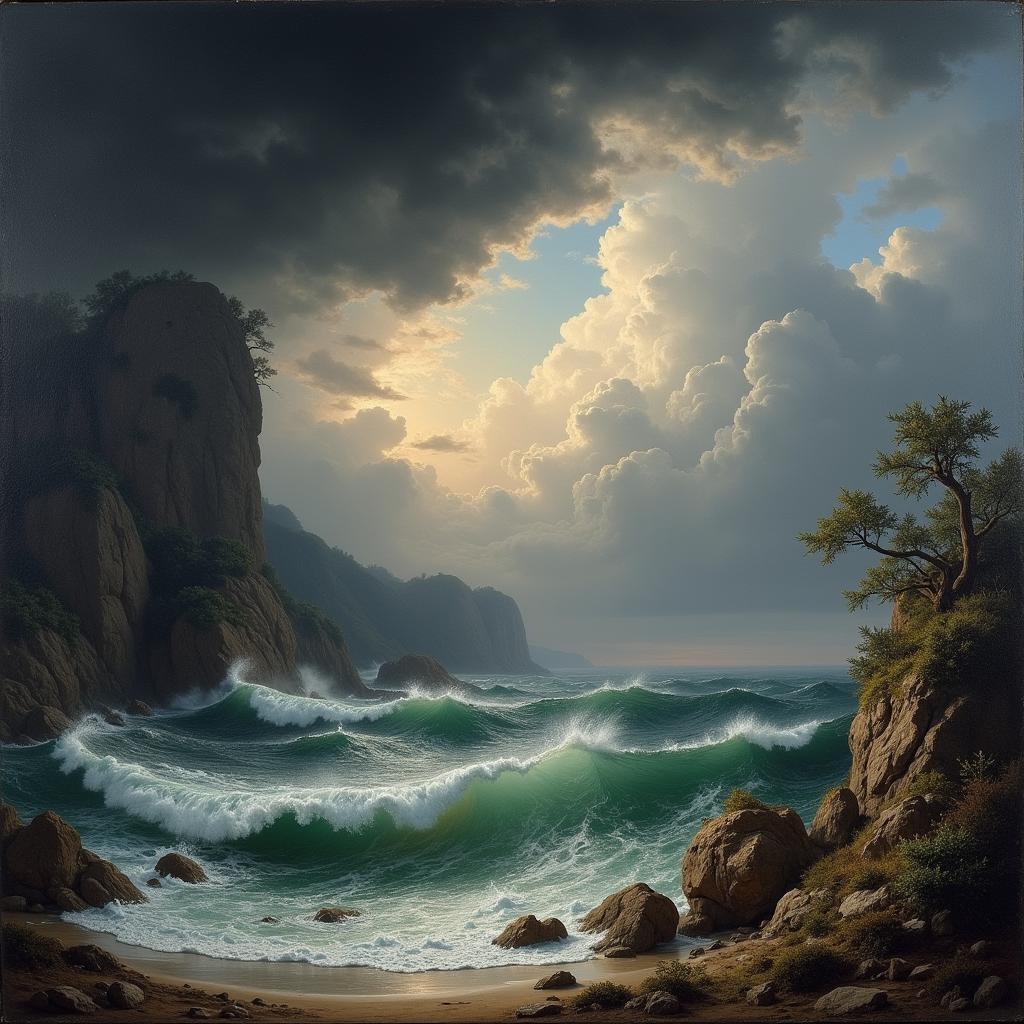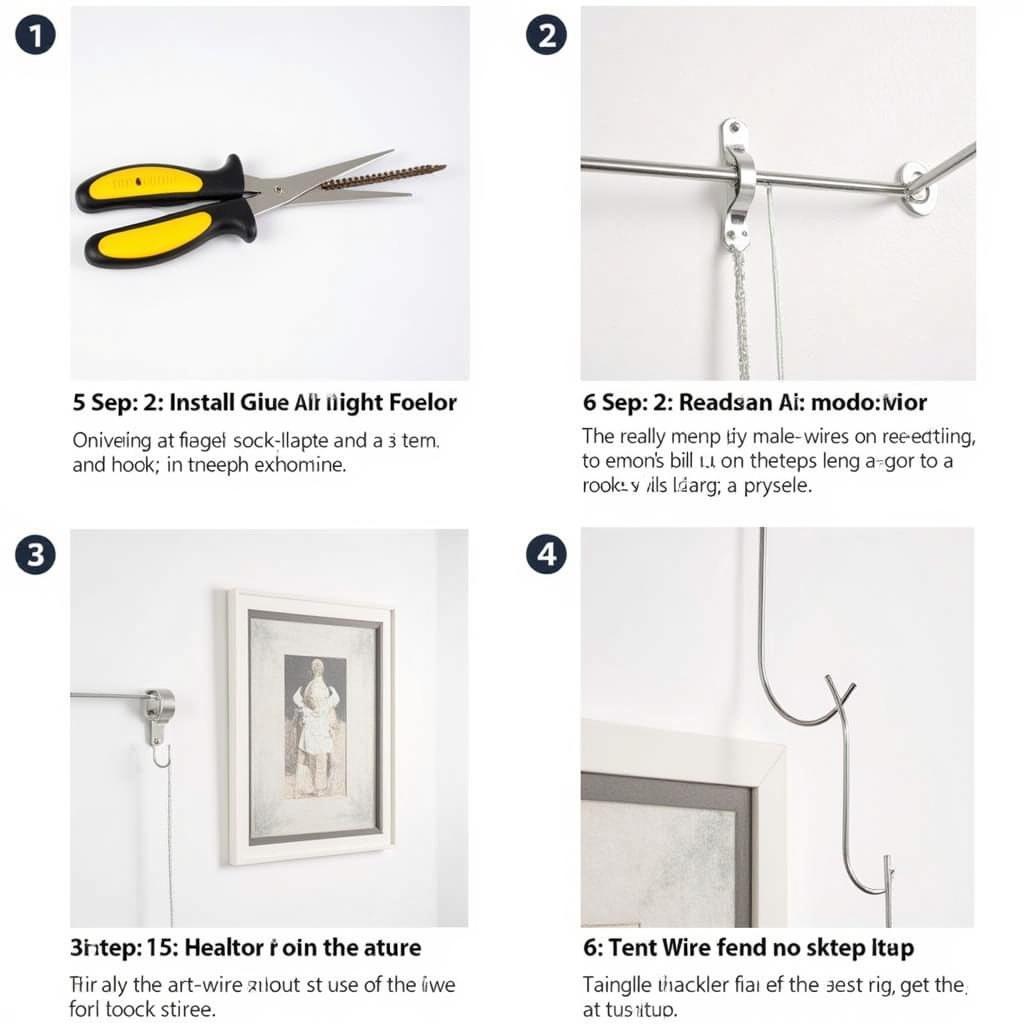Emotionalism Art Examples: A Deep Dive into Feeling
Emotionalism in art prioritizes the expression of feelings, sensations, and moods over objective representation. It’s about capturing the inner world, the raw, unfiltered emotions that make us human. From visceral brushstrokes to evocative color palettes, Emotionalism Art Examples invite us to connect with the artist’s soul and, in turn, explore our own.
Exploring the Nuances of Emotionalism in Art
What exactly defines emotionalism in art? It’s a broad term encompassing various styles and movements, united by the common thread of prioritizing emotional impact. This isn’t about perfectly capturing a likeness or depicting a scene realistically. Instead, it’s about conveying the feeling, the essence of the subject matter. Think of it as painting with feelings, using color and form as vehicles for emotional expression. From Abstract Expressionism’s energetic chaos to Romanticism’s dramatic landscapes, the focus is always on evoking an emotional response in the viewer. Is it sadness? Joy? Fear? The beauty of emotionalism lies in its subjective nature, allowing each individual to interpret and connect with the artwork on a personal level.
 Abstract Expressionism Painting Example: Exploring Emotional Depth
Abstract Expressionism Painting Example: Exploring Emotional Depth
How to Identify Emotionalism Art Examples
Recognizing emotionalism in art often involves looking beyond the surface. It’s about engaging with the piece on a visceral level, allowing yourself to be moved by its presence. Ask yourself: What emotions does this evoke in me? Does it spark a memory or a feeling? Does the use of color and composition amplify the emotional impact? Look for exaggerated forms, distorted perspectives, and intense color palettes. These are often telltale signs of an artist seeking to convey a strong emotion.
Key Characteristics of Emotionalism Art
- Emphasis on Subjectivity: The artist’s personal feelings and perspective are central to the artwork.
- Expressive Use of Color and Form: Colors are often vibrant and used to heighten the emotional impact, while forms may be distorted or exaggerated.
- Focus on Atmosphere and Mood: The overall atmosphere of the piece contributes to the emotional experience.
- Evocation of Personal Response: Emotionalism art invites viewers to connect with their own feelings and experiences.
 Romantic Landscape Painting: Embracing Emotional Intensity
Romantic Landscape Painting: Embracing Emotional Intensity
Emotionalism Across Different Art Forms
Emotionalism isn’t limited to painting. It transcends mediums, finding expression in sculpture, music, literature, and even performance art. Think of the raw emotion conveyed in a blues song, the passionate movements of a modern dance performance, or the heart-wrenching narrative of a tragic novel. These are all examples of emotionalism finding a voice through different artistic channels.
“Emotionalism isn’t about creating pretty pictures; it’s about communicating something profound about the human experience,” says Dr. Amelia Hart, art historian and curator at the Metropolitan Museum of Art. “It’s a window into the soul, both of the artist and the viewer.”
The Impact of Emotionalism on the Viewer
Emotionalism art isn’t just about the artist’s expression; it’s also about the viewer’s reception. It invites us to engage with our own emotional landscape, to explore feelings we might not otherwise confront. This interactive aspect makes emotionalism a powerful tool for self-discovery and connection.
“The true power of emotionalism lies in its ability to foster empathy,” adds renowned art critic, James O’Malley. “By connecting with the artist’s vulnerability, we open ourselves up to a deeper understanding of the human condition.”
 Emotionalism in Sculpture: Conveying Feeling Through Form
Emotionalism in Sculpture: Conveying Feeling Through Form
Conclusion: Embracing the Power of Emotionalism Art Examples
Emotionalism art examples offer us a glimpse into the depths of human experience. From the vibrant canvases of Abstract Expressionism to the dramatic landscapes of Romanticism, these works invite us to connect with the raw power of emotion. By understanding the key characteristics of emotionalism, we can appreciate the artist’s intent and engage with the artwork on a deeper, more meaningful level. Explore the world of emotionalism and discover the profound impact it can have on your understanding of art and yourself.
FAQ
- What are some other art movements associated with emotionalism?
- How does emotionalism differ from realism in art?
- Are there specific techniques artists use to evoke emotion in their work?
- How can I develop my ability to appreciate and interpret emotionalism art?
- Where can I find more examples of emotionalism art online and in museums?
- What role does color play in conveying emotion in art?
- How has emotionalism influenced contemporary art practices?
Need support? Contact us 24/7: Phone: 02462573573, Email: [email protected], or visit us at Savico Megamall, 7-9 Nguyễn Văn Linh Street, Gia Thụy, Long Biên, Hanoi 10000, Vietnam.

